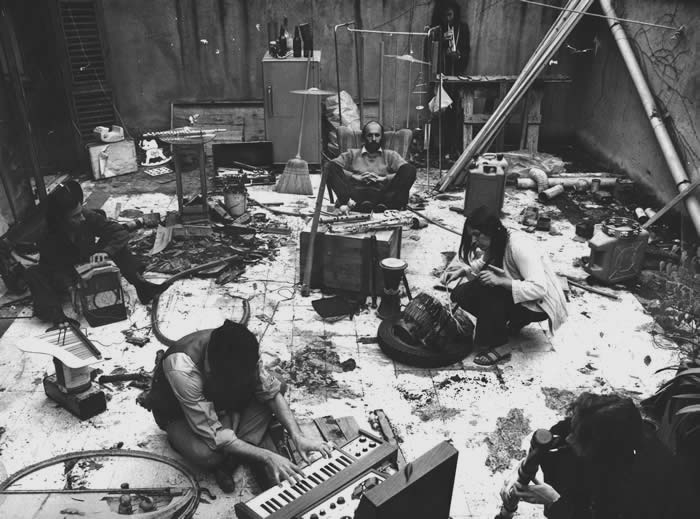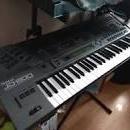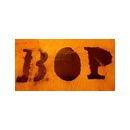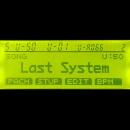Se dice que Richard Teitelbaum, fallecido de un derrame cerebral con 80 años, fue la primera persona en traer un sintetizador Moog a Europa. Corrían los sesenta y este neoyorquino, pianista de formación clásica procedente de una familia acomodada, había aprovechado su estancia en Roma con una beca Fullbright para fundar Musica Elettronica Viva, un colectivo que investigaba las posibilidades de la electrónica y la improvisación.
Contaba que todo había partido de una experiencia alucinatoria que tuvo en Roma en 1966. “Sentado con dos buenos amigos en tres esquinas de una gran cama nos pareció que durante varios minutos nos comunicábamos telepáticamente. Nuestras mentes, abiertas y sintonizadas en una misma frecuencia facilitaron la emisión y la recepción”. A raíz de aquello decidió investigar la forma de conseguir que eso se convirtiera en sonido. Teitelbaum convenció al inventor Robert Moog para que adaptara su sintetizador modular de tal forma que pudiera usar las oscilaciones neuronales de una persona ajustando electrodos en su cabeza. Al resultado lo llamó brainwave music (música con ondas cerebrales) y fue el primer paso de una larga serie de experimentos que usaban los ritmos del cuerpo humano como origen del sonido.
En ese periodo, los sintetizadores habían dejado de ser enormes monstruos difíciles de transportar y, por primera vez, la electrónica dejaba de ser patrimonio de estudios de grabación y laboratorios para poder interpretarse en directo. Contaba con la curiosidad de cierto tipo de público que, especialmente en el norte de Europa, se congregaba en festivales de jazz o encuentros de arte de vanguardia y con el apoyo económico de instituciones culturales y universitarias que antes de la crisis del petróleo de 1973 vivían un periodo de bonanza. Enamorado de la música de John Cage, uno de los objetivos de Teitelbaum era seguir el camino emprendido por él. “Para definir su idea de indeterminación, John Cage dijo que le gustaba encontrarse en una situación en la que literalmente no supiera lo que estaba haciendo. Creando una situación interactiva en la que el intérprete no puede predecir conscientemente el resultado de sus actos, su mente sobrepasa los niveles superficiales del pensamiento para alcanzar algo más profundo”, escribió en 2006.
Así, en 1968, en la primera representación en vivo de una de sus grabaciones, Organ music, dos sus colaboradores, Irene Aebi y Steve Lacy, sentados en sillas recogían con micrófonos y electrodos sus latidos y sus ondas cerebrales que él mezclaba con su sintetizador. Unos altavoces instalados en las paredes reproducían el resultado para el público. Mientras muchos de sus contemporáneos parecían más preocupados por aprovechar la electrónica para sonar muy alto, su concepción era mucho más sutil. “Mi visión de lo que era la improvisación siempre se ha preocupado con el potencial musical del inconsciente”, dijo en 1974.
Como adalid de la improvisación era natural que Teitelbaum descubriera pronto que sin ser un músico de jazz su visión de la experimentación tenía mucho puntos en común con lo que estaba pasando en el avant jazz. Especialmente con el trabajo de aquellos jazzmen que se resistían a ser calificados así, porque en aquellos años de búsqueda de la absoluta libertad cualquier etiqueta, por amplia que fuera, se les quedaba pequeña. Es el caso saxofonista Anthony Braxton con el que colaboró en muchas ocasiones.
A pesar de venir de distintas tradiciones, Braxton, miembro de la Association for the Advancement of Creative Musicians y Teitelbaum se movían en un terreno común. Eran parte de una generación comprometida con superar los límites.
Teitelbaum fue también uno de los primeros globalistas músicales. En 1970, mientras estudiaba etnomusicología en la universidad de Wesleyan, Connecticut, fundó la World Band, un colectivo de improvisación con músicos de oriente medio, India, Japón y Corea. Gracias a una segunda beca Fullbright ,en 1976 pasó un año en Tokio estudiando shakuhachi, la flauta de bambú japonesa, con la que grabaría en 1977, Blends, en colaboración con su maestro, Katsuya Yokoyama. También se interesó por la tradición musical judía, como reflejó en dos óperas multimedia Golem (1989) y Z´vi (2003) .
Además de músico y compositor, Teitelbaum se dedicó a la enseñanza en instituciones y universidades de California, Chicago y Toronto. Casado con la pianista japonesa Hiroko Sakurazawa, en 1988 empezó a dirigir el estudio de composición electrónica de la universidad de Bard, en el estado de Nueva York, donde permanecería hasta el final de su carrera.
Fuente: El País

Contaba que todo había partido de una experiencia alucinatoria que tuvo en Roma en 1966. “Sentado con dos buenos amigos en tres esquinas de una gran cama nos pareció que durante varios minutos nos comunicábamos telepáticamente. Nuestras mentes, abiertas y sintonizadas en una misma frecuencia facilitaron la emisión y la recepción”. A raíz de aquello decidió investigar la forma de conseguir que eso se convirtiera en sonido. Teitelbaum convenció al inventor Robert Moog para que adaptara su sintetizador modular de tal forma que pudiera usar las oscilaciones neuronales de una persona ajustando electrodos en su cabeza. Al resultado lo llamó brainwave music (música con ondas cerebrales) y fue el primer paso de una larga serie de experimentos que usaban los ritmos del cuerpo humano como origen del sonido.
En ese periodo, los sintetizadores habían dejado de ser enormes monstruos difíciles de transportar y, por primera vez, la electrónica dejaba de ser patrimonio de estudios de grabación y laboratorios para poder interpretarse en directo. Contaba con la curiosidad de cierto tipo de público que, especialmente en el norte de Europa, se congregaba en festivales de jazz o encuentros de arte de vanguardia y con el apoyo económico de instituciones culturales y universitarias que antes de la crisis del petróleo de 1973 vivían un periodo de bonanza. Enamorado de la música de John Cage, uno de los objetivos de Teitelbaum era seguir el camino emprendido por él. “Para definir su idea de indeterminación, John Cage dijo que le gustaba encontrarse en una situación en la que literalmente no supiera lo que estaba haciendo. Creando una situación interactiva en la que el intérprete no puede predecir conscientemente el resultado de sus actos, su mente sobrepasa los niveles superficiales del pensamiento para alcanzar algo más profundo”, escribió en 2006.
Así, en 1968, en la primera representación en vivo de una de sus grabaciones, Organ music, dos sus colaboradores, Irene Aebi y Steve Lacy, sentados en sillas recogían con micrófonos y electrodos sus latidos y sus ondas cerebrales que él mezclaba con su sintetizador. Unos altavoces instalados en las paredes reproducían el resultado para el público. Mientras muchos de sus contemporáneos parecían más preocupados por aprovechar la electrónica para sonar muy alto, su concepción era mucho más sutil. “Mi visión de lo que era la improvisación siempre se ha preocupado con el potencial musical del inconsciente”, dijo en 1974.
Como adalid de la improvisación era natural que Teitelbaum descubriera pronto que sin ser un músico de jazz su visión de la experimentación tenía mucho puntos en común con lo que estaba pasando en el avant jazz. Especialmente con el trabajo de aquellos jazzmen que se resistían a ser calificados así, porque en aquellos años de búsqueda de la absoluta libertad cualquier etiqueta, por amplia que fuera, se les quedaba pequeña. Es el caso saxofonista Anthony Braxton con el que colaboró en muchas ocasiones.
A pesar de venir de distintas tradiciones, Braxton, miembro de la Association for the Advancement of Creative Musicians y Teitelbaum se movían en un terreno común. Eran parte de una generación comprometida con superar los límites.
Teitelbaum fue también uno de los primeros globalistas músicales. En 1970, mientras estudiaba etnomusicología en la universidad de Wesleyan, Connecticut, fundó la World Band, un colectivo de improvisación con músicos de oriente medio, India, Japón y Corea. Gracias a una segunda beca Fullbright ,en 1976 pasó un año en Tokio estudiando shakuhachi, la flauta de bambú japonesa, con la que grabaría en 1977, Blends, en colaboración con su maestro, Katsuya Yokoyama. También se interesó por la tradición musical judía, como reflejó en dos óperas multimedia Golem (1989) y Z´vi (2003) .
Además de músico y compositor, Teitelbaum se dedicó a la enseñanza en instituciones y universidades de California, Chicago y Toronto. Casado con la pianista japonesa Hiroko Sakurazawa, en 1988 empezó a dirigir el estudio de composición electrónica de la universidad de Bard, en el estado de Nueva York, donde permanecería hasta el final de su carrera.
Fuente: El País

1
Responder
Citar








